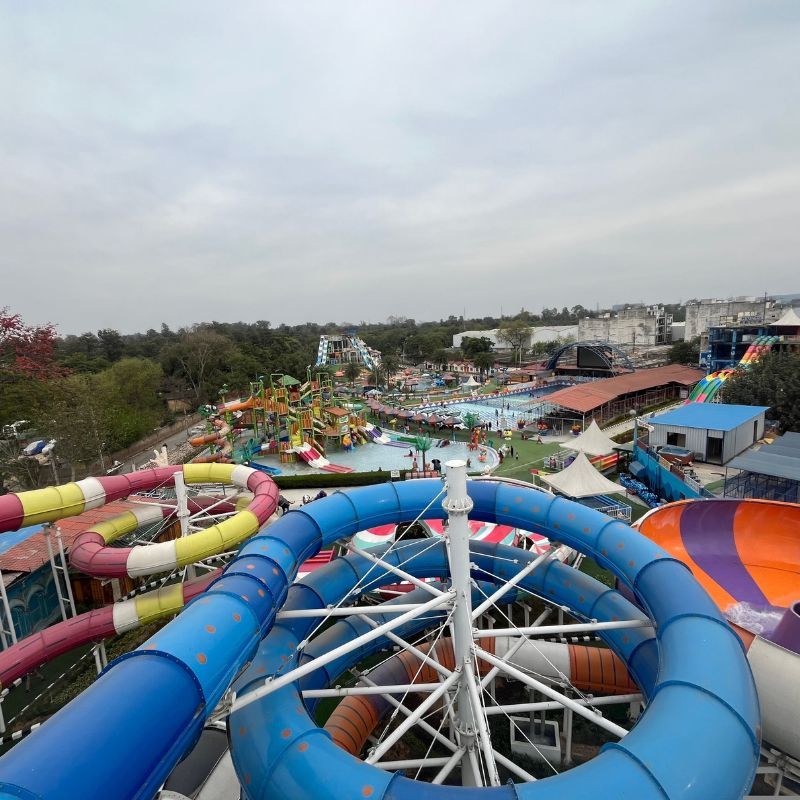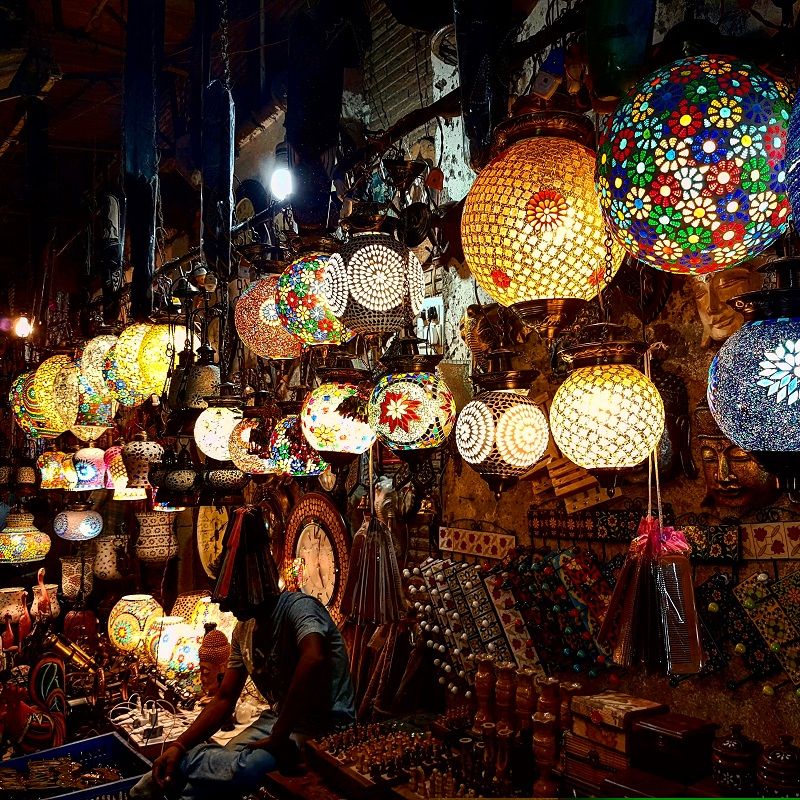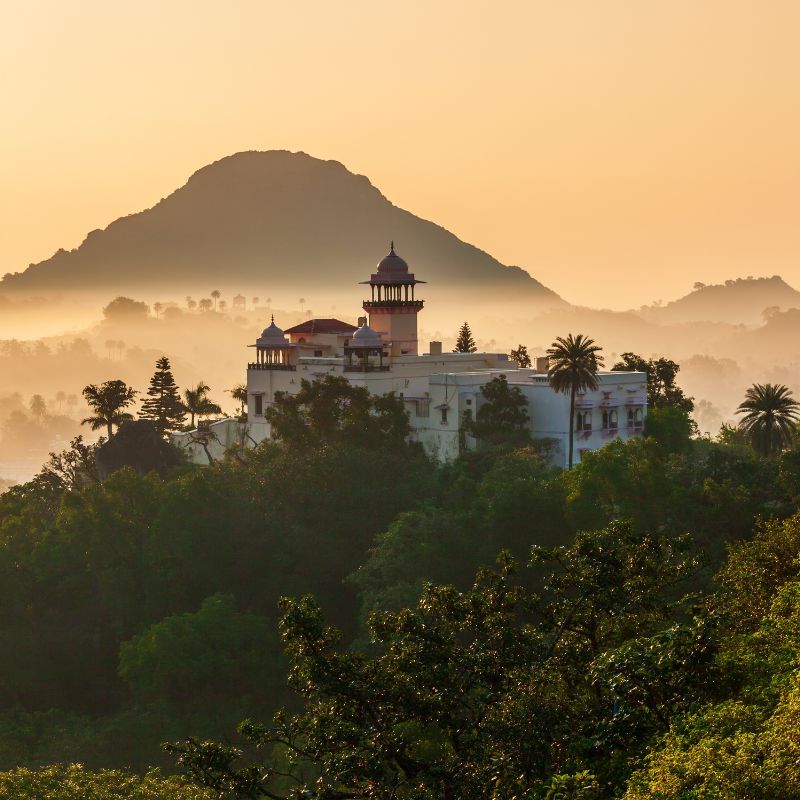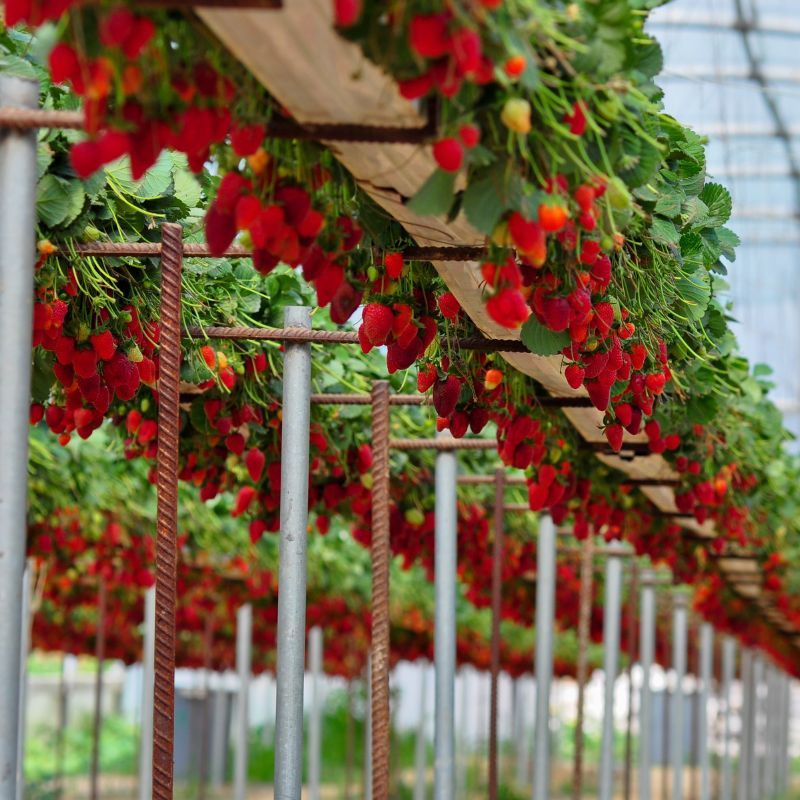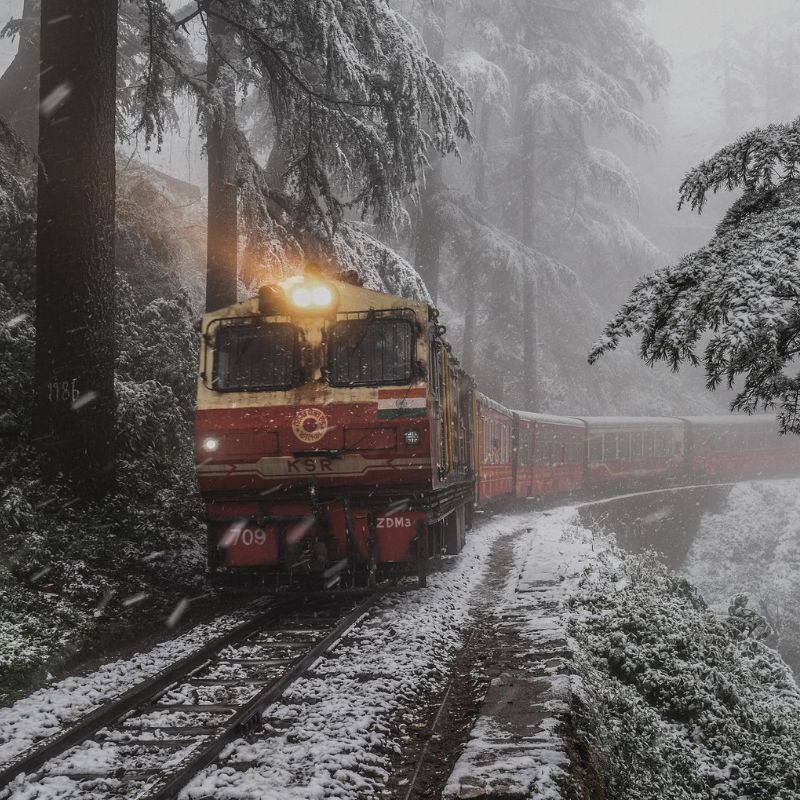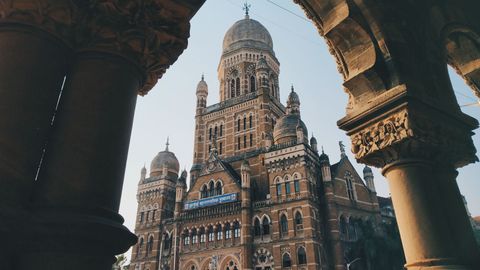
The history of Indian railways is a story of innovation, determination, and transformation. With its inception dating back to the British colonial era, Indian Railways has evolved into a vast and intricate network, known for its unparalleled reach and operational complexity. Join us as we embark on a journey through time and tracks to explore the oldest railway stations in the country, each a remarkable testament to India’s enduring love affair with the railways.
It all began with the inaugural train journey from Mumbai to Thane in 1853, covering a short distance but marking a giant leap in the country’s transportation history. As the rail network expanded, so did the railway stations, many of which were designed and built during the colonial period. These stations stand as living monuments to a bygone era, showcasing not only the architectural brilliance of the time but also preserving historical narratives that continue to captivate travellers.
Oldest railway stations in India
Chhatrapati Shivaji Maharaj Terminus, Mumbai (1853, rebuilt in 1887)

Previously known as Bori Bunder, the Chhatrapati Shivaji Maharaj Terminus (CSMT) was the first railway station in India and was built by the Great Indian Peninsular Railway. The first passenger train ran from Bori Bunder to Thane in 1853. Later, the station was reconstructed and named Victoria Terminus in 1887. Rechristened Chhatrapati Shivaji Terminus (CST) in 1996 and then again in 2017, the CSMT is one of the most iconic railway stations in India. Recognised as a UNESCO World Heritage Site in July 2004, its gorgeous Indo-Saracenic architectural style is a sight to behold.
Designed by British architect F. W. Stevens, the construction of the railway station began in 1878 and was inspired by the High Victorian Gothic design. The stone dome, turrets, pointed arches and unconventional ground plan make it an emblematic structure, contributing a unique charm to the city.
Howrah Railway Station, Kolkata (1852)

Built in 1852 and starting operations one year later, Howrah Railway Station is one of the oldest and busiest railway stations in the country. The striking red structure of the building and its exquisite architecture draw passersby to stop and admire the gigantic brick arches, sublime towers and windows. Designed by British architect Halsey Ralph Richard, the building of the railway station features Romanesque architectural elements. With its 23 platforms, the station serves almost one million passengers on 600 trains every day. As one of the first stations in India where the first train ever ran, Howrah Railway Station holds the utmost historical importance in India’s railway history.
Royapuram Railway Station, Chennai (1856)

The Royapuram Railway Station in Chennai is the third oldest railway station in India, boasting a rich history spanning 167 years. The station, designed by William Adelpi Tracey, features grand Corinthian columns influenced by colonial architectural styles. This red and white building was inaugurated on July 1, 1856, by Lord Harris, the Governor of Madras Presidency. The station’s first passenger journey featured Lord Harris and 300 European delegates on board, marking a significant moment in India’s railway heritage.
Old Delhi Railway Station, Delhi (1864)

In 1864, the East Indian Railway Company took a small building and transformed it into what we now know as the Old Delhi Railway Station. After renovating it in 1903 with just two platforms, this prominent railway station, located near Chandni Chowk, has evolved over time. Drawing inspiration from the historical Red Fort, the station is a captivating blend of Greco-Roman and Indo-Islamic architectural styles, resulting in a structure that resembles a fort, palace and mosque.
Although the original colour of the railway station was changed from red to ochre, the soothing design elements continue to add to its beauty. With over 250 trains handling more than 2 lakh passengers across 16 platforms, Old Delhi Railway Station is one of the busiest railway stations in the capital city.
Jaipur Junction Railway Station, Jaipur (1875)
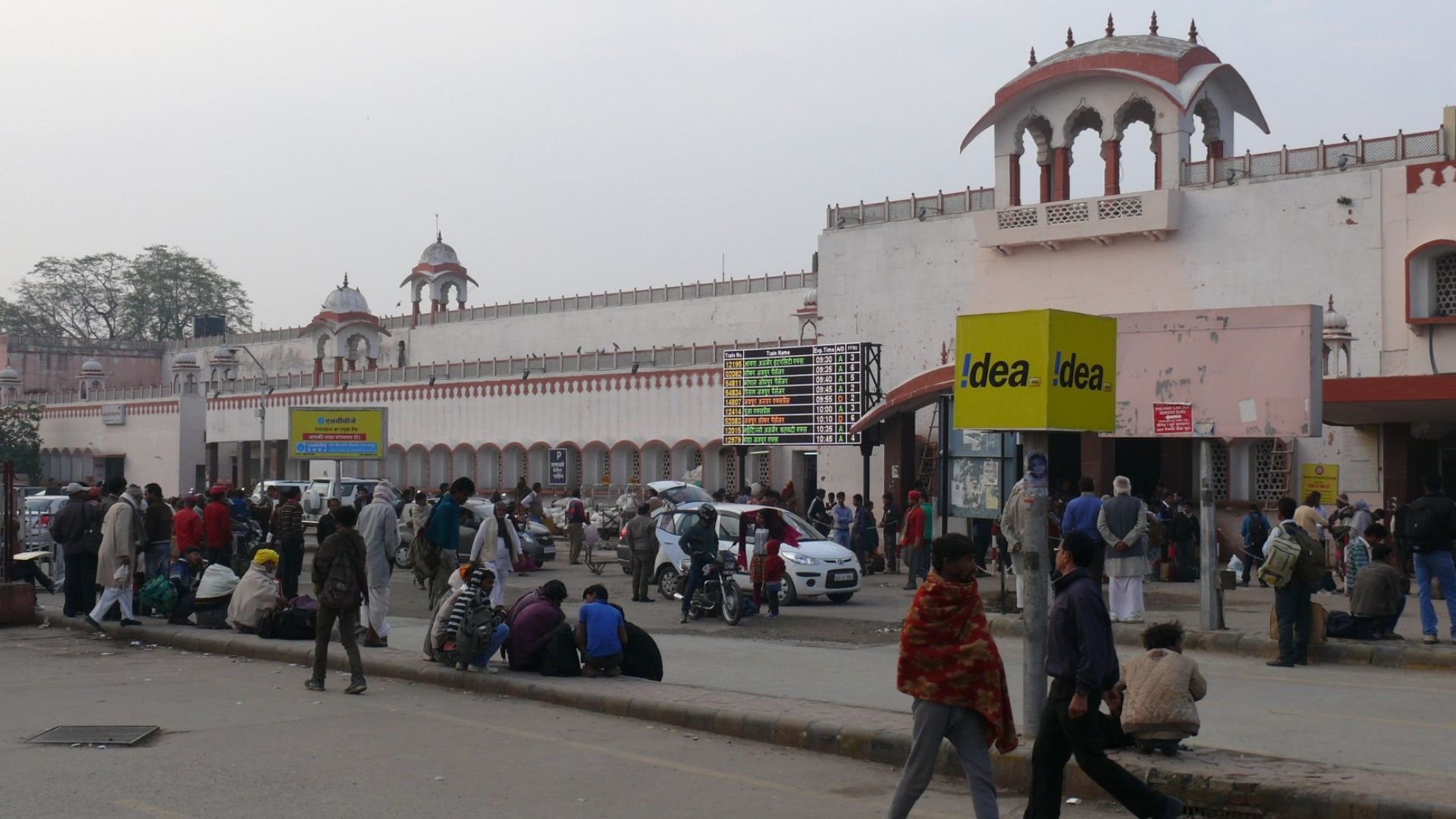
Located in the heart of Jaipur city near Sindhi Camp Bus Terminal and Jaipur Metro Station, Jaipur Junction connects trains to major cities across India. Built in 1875, the railway station stands at an elevation of 428 metres above sea level. Capturing the essence of the pink city, the architecture features jaali work, arches, domes, arcades, stone and mirror craftsmanship. This is one of the busiest railway stations in Rajasthan, serving more than 40,000 passengers daily.
Puducherry Railway Station (1879)

Another majestic railway station in India that is worth admiring is the Puducherry Railway Station. Built in 1879, it is one of the oldest railway lines in India that was constructed during the French and British colonial rule. The Greco-Roman columns on the façade of the building transport visitors back in time to the colonial era. Running trains regularly from Chennai, Villupuram and Tirupathi, the railway station connects major cities in the country, including Mangaluru, Kanyakumari, Bengaluru, Kolkata, New Delhi, Bhubaneswar and Mumbai via Villupuram.
Ghum Railway Station, Darjeeling (1881)
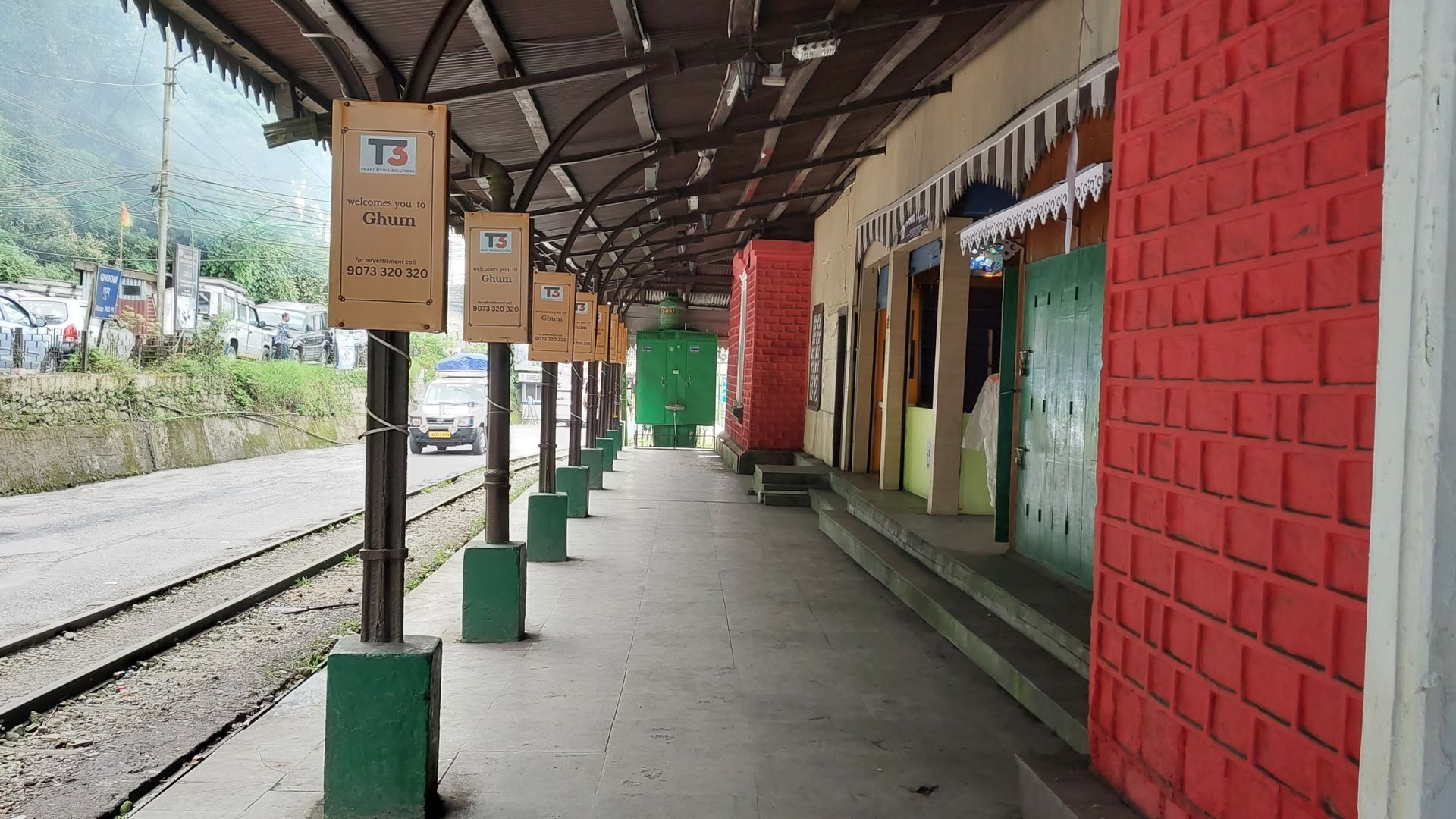
Owing to its picturesque route that trails through lush tea gardens, the famous ‘Toy Train’ on the Darjeeling Himalayan Railway attracts visitors from around the world. The railway line starts at New Jalpaiguri Railway Station (NJP) in West Bengal and reaches Darjeeling in approximately three hours, steering through several other stations like Sukna, Kurseong and Sonada, before reaching Ghum. Situated at an altitude of 7,407 feet, Ghum marks the highest point on the route.
Built in 1881 and covering a distance of 78 km, this quaint colonial-era station is famous for being India’s highest railway station reachable by a steam locomotive and the second highest in the world. It houses a remarkable museum that shares the history of Himalayan railways dating back more than a century. The museum is home to a collection of old tickets dating from 1883 and showcases the evolution of the steam engine and more, offering a fascinating glimpse into the region’s railway heritage.
Virangana Lakshmibai Station, Jhansi (late 1880s)

Constructed by the Britishers in the late 1880s, Virangana Lakshmibai Station, known as Jhansi railway station until 2021, is a major transportation hub that connects the north and south of the country. The station’s massive fort-like structure is painted in maroon and off-white, and its design is inspired by the Jhansi Fort and Rani Mahal. Serving as a busy station for passengers as well as commercial services, it is the departure point for India’s fastest train, the Gatimaan Express.
Barog Railway Station, Himachal Pradesh (1903)
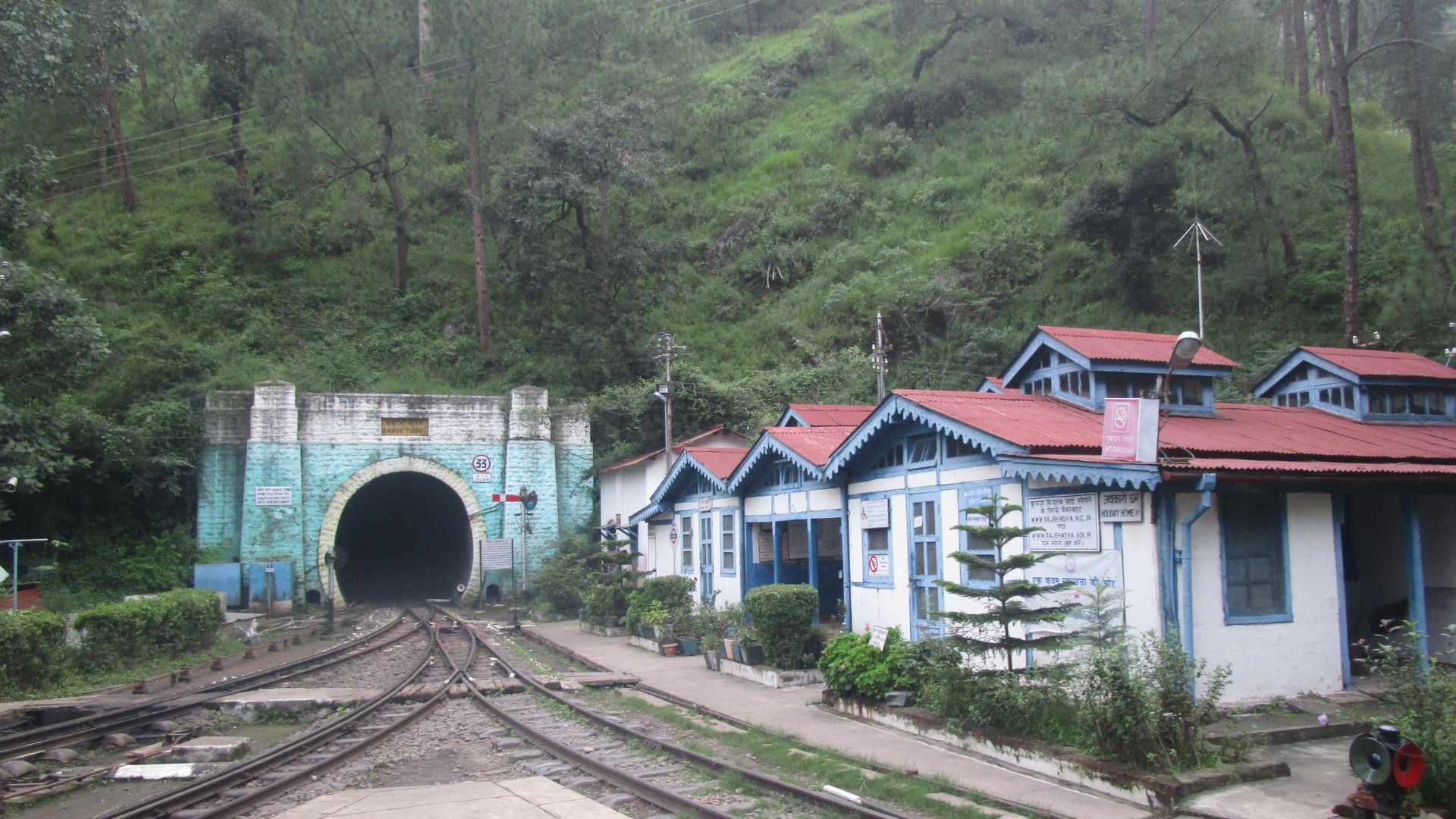
Another spectacular railway station in India located on the Kalka Shimla Railway line is the Barog Railway Station. Covering a distance of 96.54 km, the train traverses breathtaking hill stations, including Solan, Barog, Salogra, Kandaghat, Shoghi, Taradevi, and Jutogh before finally reaching Shimla. Built by the British between 1898 and 1903, this iconic train runs on a 2 ft 6 inches narrow-gauge railway and was granted the prestigious status of a UNESCO World Heritage Site in 2008.
With its Scottish-style elaborate rooflines and cottage-like structure, the station should be visited for its picturesque views. Located a few metres away from a pine forest, the station has two wooden structures – the first houses offices, and the second serves as a rest house for passengers. The small station is also home to the famous ‘Tunnel Number 33’ located at the far end of the station. It is the longest tunnel of the Kalka-Shimla railways, measuring 1143 metres in length. Visit this underrated gem and onboard the train, savouring the mesmeric scenery of the mountains and valleys of Himachal Pradesh.
Coonoor Railway Station (1908)

Built in 1908, the stunning railway station has been featured in several films, including A Passage to India, directed by David Lean. The red and blue gabled structure set against the hilly backdrop makes the railway station a must-visit.
Experience a larger-than-life train journey meandering through 16 tunnels, 250 bridges, and 208 twists and turns on the Nilgiri Mountain Railway. Halting the train at Coonoor Railway Station, the train also connects Mettupalayam to Nilgiri Hills while passing through Ooty via Kellar, Wellington, and Lovedale. The seventh station on the Nilgiri Mountain Railway also serves the popular hill station of Coonoor. Travellers can be seen glued to their window panes, admiring the fleeting landscapes of the Western Ghats. Earning the title of UNESCO World Heritage Site in 2005, the journey on this narrow-gauge single-track railway is bound to delight you.
(Hero and feature image credit: Varad Parulekar/Unsplash)
Related: Verdant Vibes – These Are The Greenest Railway Stations In India
Frequently Asked Questions (FAQs)
– When was the first railway station in India established?
The first railway station in India was Bori Bunder, located in Mumbai, and it was established in 1853. Later, it was rebuilt as Victoria Terminus and is now known as Chhatrapati Shivaji Maharaj Terminus.
– Which is the second oldest railway station in India?
Howrah Railway Station is the second oldest railway station in India.
– Are these old railway stations still operational?
Yes, these old railway stations are still operational and serve as vital transportation hubs in the country.
– Can tourists visit these old railway stations?
Absolutely, tourists can visit these old railway stations and board trains to various destinations across the country, enjoying the historical and architectural significance of these stations.




